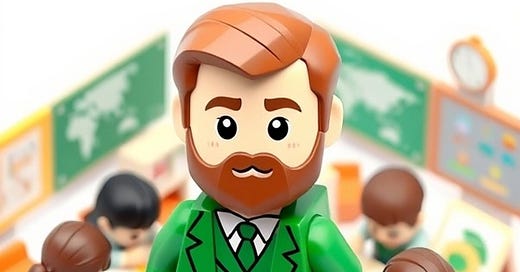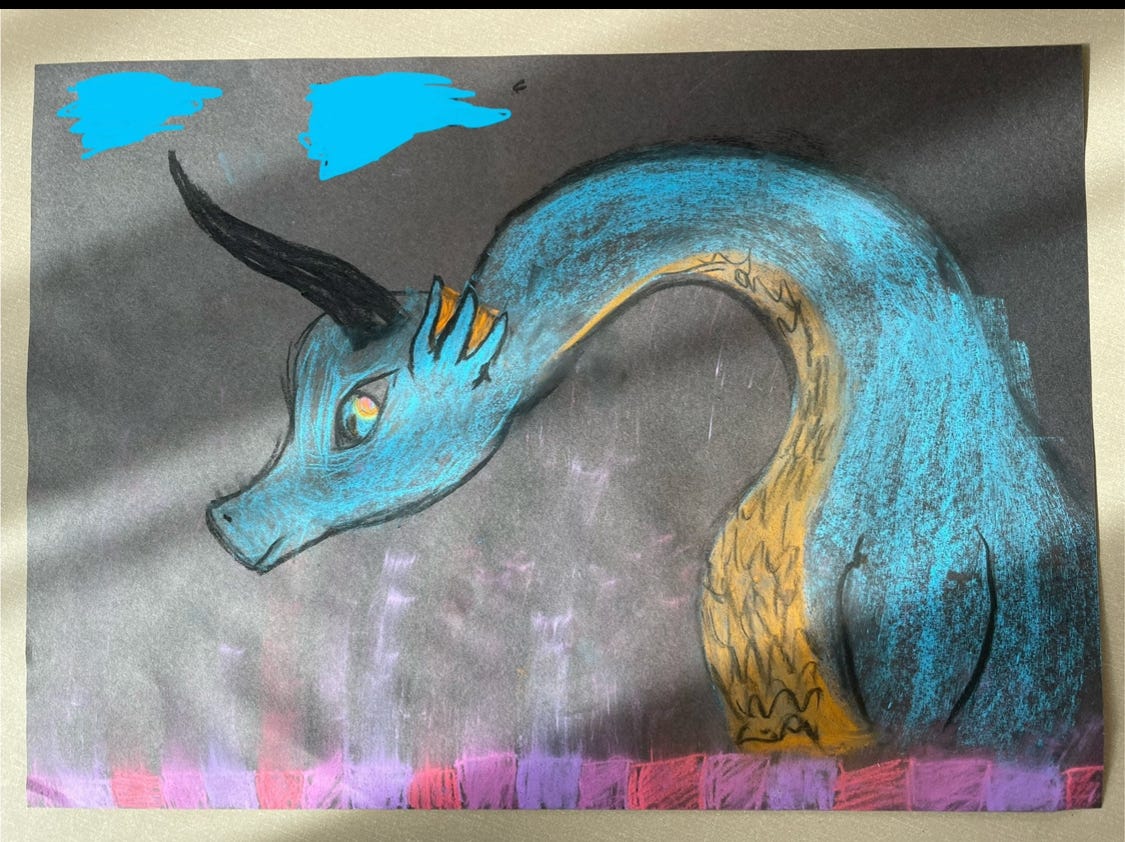How to be the Champion Your Students Need
This student almost got lost in the education system. We found a way for them to flourish.
“Every child deserves a champion” – Rita Pierson, who needs no introduction.
I’m in my fourth year of teaching. I started in 2021, teaching a Year 4 (aged 8–9) class, before moving up to Year 6 in my second year. That meant those Year 4s caught up with me in my third year and I had the pleasure of teaching many of them again.
I think that’s the easiest I’ll ever find teaching.
They were fantastic – kind to each other, hard workers with academic ability everywhere you looked and humour so thick you could scoop it up with a spoon and serve it with a chocolate flake. I’ll remember them all as long as I live. I still see them now and then on their way to secondary school and every time it brings sunshine to my day.
This post is about how I celebrated the talents of one of them – someone who needed a champion more than most.
How It Started
This student – let’s call them Frida for their bold spirit and artistic genius – joined the school late in Year 3 after some unhappy years of schooling.
Academically, they were far behind. At eight years old, they could barely read and were unwilling to write. Maths was a completely closed book at this point.
But that wasn’t the full story.
Socially, Frida faced constant challenges: they’d been diagnosed with neurological differences, but previous schools hadn’t offered the correct understanding or support; Frida spent little time in classrooms with peers, leaving them feeling marginalised, outcast, and unwelcome; none of their behaviours fit what others – children or adults – expected. To them, everything felt like a punishment for simply being who they are.
Our school changed that.
Frida spent nearly every lesson with their peers. My role was to create resources they could use to access the same tasks as the rest of the class and remain as part of the group, rather than learn elsewhere like they don’t belong with us. For example, if the class was writing narratives, Frida’s goal might be a simplified version of each section, supported by a teaching assistant (TA). Together, they’d complete a full story.
Year 4 went well.
Year 5 did not. Frida was paired with another child who had even greater needs and they struggled to work together. A change in teacher and TA – meant to familiarise Frida with more adults – only disrupted their progress.
So Frida came back to me in Year 6.
How It Went
As the class teacher, my official role was to help children develop skills outlined by the government and research. So, did I conquer all of Frida’s academic challenges? Did they reach the expected reading, writing, and maths levels for their age?
No, they didn’t.
But for Frida, those weren’t the goals.
Because while Frida faced significant challenges they also had extraordinary talent.
Here are just a couple of their Year 4 creations:
A clay dragon, crafted using only a drawing pin.
A chalk dragon (Frida had a real dragon phase) drawn in about ten minutes.
For an eight-year-old, this level of skill was extraordinary.
In Year 6, I gave Frida as much time as possible to practise their art. They kept a doodle book at their desk for use after finishing learning tasks or while I read to the class. In the back of the room, they had a space for larger projects, working on these during brain breaks or when they needed a moment of calm.
This approach gave Frida a sense of belonging that they’d never experienced before.
I also visited their future secondary school. I wanted to prepare the teachers for the unique child they were about to welcome and explained Frida’s strengths, challenges and needs, hoping to ease the transition. I even reviewed their timetable so I could mirror its structure during Frida’s final months in primary school.
And, of course, I wanted to see the art facilities.
Celebrating Frida
We achieved academic progress we were proud of but, more importantly, we made school enriching. Frida attended regularly, gained social confidence, and made lasting friendships with a very popular group of children. By the end of the year, they finally felt they belonged.
And we celebrated their art, something that made them different but in the right way because it made them exceptional.
A few years ago, I saw a photo of a teacher named Rebecca Bonner wearing a skirt covered in doodles by her students. It spoke to me in the deepest, most powerful way.
Inspired, I created clothing featuring Frida’s drawings:
A T-shirt with an axolotl in a frog onesie.
Another with a rainbow octopus wearing a golden bowtie.
And the jumper that I’m currently wearing, adorned with a moustachioed spider holding a cup of tea and a croissant. (Look at his hat. Isn’t he to die for?)
Knowing their creations lived on in these tokens filled Frida with pride. They may never have expressed gratitude in the way most of us do, but I know they valued the gesture. They may not understand why I felt the need to champion them but they felt the benefit in spades during that final year.
It was, after all, a celebration of who they are.
How you can champion those who need it the most:
- Find something that their differences make them exceptional at and give them chance to shine. Fixated on a topic? Use the knowledge they have in lessons. Obsessed with a skill? Showcase it, display it, create a talent show to give them a platform.
- Find ways their differences can hold them back and compensate where you can. Struggling to focus on long writing tasks? Maybe music or more comfortable working spaces can help. Feeling socially outcast? Partner them with different people in the classroom until you match someone to their interests or, better still, their values.
Looking for more?
Here is a previous story I wrote about Frida and another development we provided them with - calmness:
Calmness personified
Sometimes, even the most erratic students can surprise you with how calm they can be.
And here is a recent story about giving another student a platform to show what makes them special.
How to Give Children Belief in Their Powers
Strong relationships can make school worthwhile for students. They’re what keep kids coming back even when the material is challenging or their home life is hard. For teachers, perfecting the art of relationship-building is one of the most powerful ways to impact students’ lives.
Here, I share one of my favorite methods for building those relationships.
Enjoying what I write? Want others to see it? Think the world should be aplaster with my words of wisdom? Click share below and choose who to send this post to so they can read it too.














This is another wonderful piece, and you can relate to Fida. You are so right about being the champion, as so many children need a role model.
Everyone needs a champion in their corner!
One of the coolest student gift I’ve received was a T-shirt with a hand drawn picture of me. By encouraging my student’s artistic talent, I’m telling him that he is special and deserves recognition. Thank you for being a champion for your students!